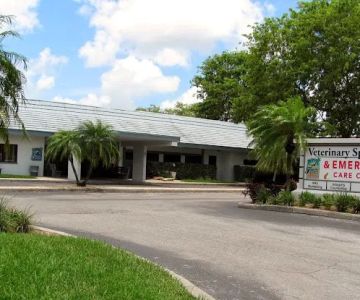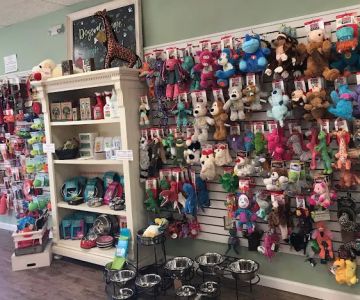- 1. Key Tips for Grooming Senior Dogs with Special Needs
- 2. Understanding the Special Health Needs of Senior Dogs
- 3. How to Brush and Bathe Your Senior Dog Properly
- 4. Nail Care and Ear Cleaning for Senior Dogs
- 5. Health Monitoring While Grooming a Senior Dog
- 6. Choosing the Right Products for Grooming Your Senior Dog
1. Key Tips for Grooming Senior Dogs with Special Needs
As dogs age, their grooming needs change significantly. If you have a senior dog with special needs or health issues, grooming can become a more challenging task. Understanding how to properly care for your dog’s grooming needs while considering their health status is essential. With the right approach, grooming can be a positive experience for both you and your dog, and it can also help detect health problems early.
Senior dogs may have arthritis, vision or hearing loss, and reduced mobility, all of which can affect their comfort during grooming. It’s important to adjust your grooming routine to accommodate these changes. For example, use slow, gentle movements when brushing or bathing, and ensure that your dog is well-supported and comfortable during the process. Keep the grooming sessions shorter but more frequent to avoid stress.
2. Understanding the Special Health Needs of Senior Dogs
Senior dogs, especially those with special needs, often face various health challenges that can affect their grooming process. Issues such as dry skin, mobility problems, and cognitive decline need to be taken into account when deciding on the best grooming practices for your dog. Older dogs may have joint pain or arthritis, which can make certain grooming positions difficult or painful for them.
Additionally, health problems like diabetes, kidney disease, or heart conditions can impact a dog’s energy levels and tolerance for grooming. This makes it even more important to adjust your grooming routine to fit your dog’s health. Regular checkups with your veterinarian are essential to monitor these conditions and ensure that your dog is in good health before starting the grooming process.

1501A S Belcher Rd, Largo, FL 33771, USA
See Details3. How to Brush and Bathe Your Senior Dog Properly
Brushing and bathing are essential parts of keeping your senior dog clean and healthy. However, you’ll need to be gentle and mindful of your dog’s physical limitations. When brushing, always use soft-bristled brushes and avoid pulling too hard on the fur to prevent discomfort or pain. For dogs with arthritis or stiff joints, use a brush with a comfortable handle that allows you to maintain a relaxed grip.
Bathing your senior dog requires extra care, particularly if they have skin issues or are sensitive to water temperature. Use warm water and a dog-friendly, hypoallergenic shampoo to avoid irritating their skin. If your senior dog has difficulty standing for long periods, you might want to use a non-slip mat or a dog bath seat to keep them secure while bathing. After bathing, thoroughly dry your dog’s coat to prevent any skin irritations or fungal infections.
4. Nail Care and Ear Cleaning for Senior Dogs
Nail care is another critical part of grooming, and senior dogs often require more frequent nail trimming due to reduced activity levels. Regularly check your dog’s nails for growth and trim them as necessary. For dogs with mobility issues or those who are sensitive to touch, consider using a nail grinder instead of clippers to avoid injury. If you're unsure how to trim your dog's nails safely, it’s always best to consult your vet or a professional groomer.
Ear cleaning is also an important grooming task, particularly for senior dogs, as they are more prone to ear infections. Clean your dog’s ears gently with a dog-safe ear cleaner, and be cautious not to push anything too far into the ear canal. Senior dogs may have trouble keeping their ears dry, so it’s important to inspect them regularly for signs of infection, such as redness, odor, or discharge.
5. Health Monitoring While Grooming a Senior Dog
Grooming sessions for senior dogs offer an excellent opportunity to monitor their overall health. As you brush, bathe, or trim their nails, keep an eye out for any signs of discomfort, such as limping, swelling, or excessive scratching. These could be indications of an underlying health issue that requires attention.
Additionally, during grooming, check your dog’s skin for any lumps, bumps, or unusual growths. Pay attention to their coat for signs of thinning or changes in texture, which could indicate health problems like hormonal imbalances or skin infections. Regular grooming can help you detect issues early, and this could be a life-saving step for your senior dog.
6. Choosing the Right Products for Grooming Your Senior Dog
Choosing the right grooming products for your senior dog is crucial in maintaining their comfort and health. Opt for high-quality, non-irritating grooming tools that are specifically designed for senior dogs. For example, choose shampoos and conditioners that are gentle on older dogs' skin, especially those with special needs like dry skin or allergies.
There are also specialized brushes and combs available for dogs with special needs. For dogs with thicker coats, a pin brush or de-shedding tool may be useful, while for short-haired dogs, a soft-bristle brush will suffice. Always use a product that matches the specific needs of your dog’s coat and skin type. For mobility-impaired dogs, consider using grooming tools that are easier to handle, with ergonomic designs that reduce strain on your hands and wrists.
If you’re unsure about which products to use, consult with your veterinarian or a professional groomer. At Hidden Brook Veterinary, we offer a range of grooming products that are specifically designed for senior dogs with special health needs. Our products are made with the highest quality materials to ensure your dog’s comfort and health during every grooming session.










